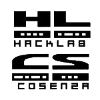Un metodo per produrre antenne a basso costo e a guadagno accettabile è quello di stamparle su basette di rame. Anzitutto scegliamo il modello dell'antenna (alcuni sono disponibili qui ma le istruzioni vanno tradotte dal polacco!). L'obiettivo è quello di realizzare un antenna economica con un guadagno sui 14 dbi da attaccare alla fonera. L'antenna che abbiamo scelto è questa :
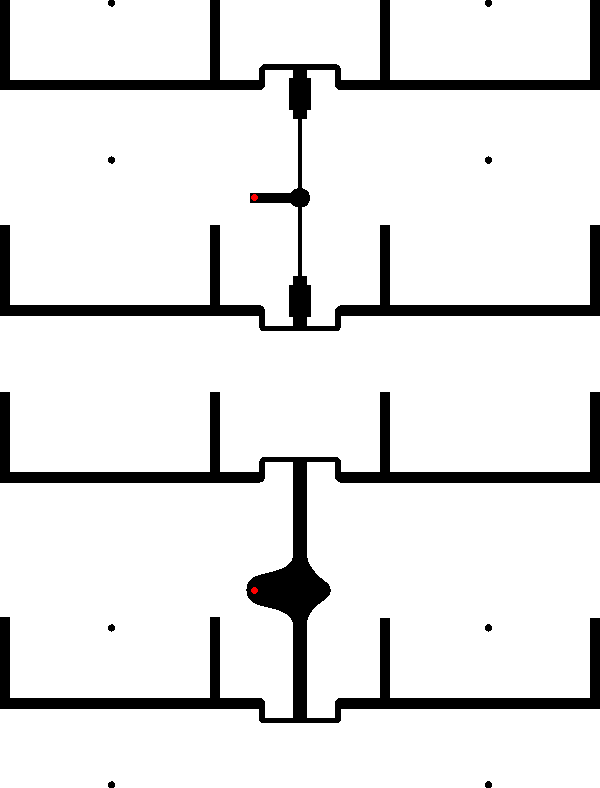
Si tratta di un array di dipoli da stampare su due lastre di rame a singola faccia. Il metodo che abbiamo usato per l'incisione è quello con i fogli Press And Peel che permettono a chiunque (abbia un ferro da stiro!) di stampare un circuito con una spesa iniziale molto ridotta. Intatti è sufficiente trovare i fogli che vendono in pacchi da 5 a circa 12 €, e l'acido che costa 3-4€.
Materiale:
materiale |
quantità |
costo |
Basetta di rame 20X30 cm |
1 |
5 € |
Foglio press-n-peel |
1 |
1,2 € |
Cavo RF |
0.5m |
< 1€ |
Connettore R-SMA femmina |
1 |
3.5 € |
Viti o distanziatori |
4 |
< 1 € |
Totale |
|
10 euro! |
1. Stampiamo il disegno su un foglio press and peel avendo l'accortezza di 1)rispettare le dimensioni che devono essere 194 x 255 mm 2) stamparlo con stampante laser 3) flippare orizzontalmente l'immagine
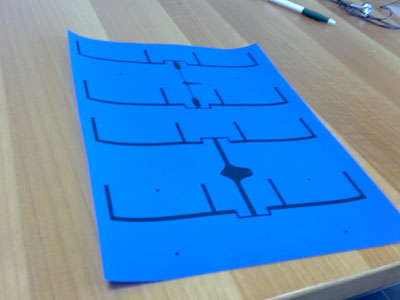
2. Puliamo la basetta di rame. Consigliamo di pulirlo con una spugna con una parte ruvida (di solito verde) e dell'alchool. 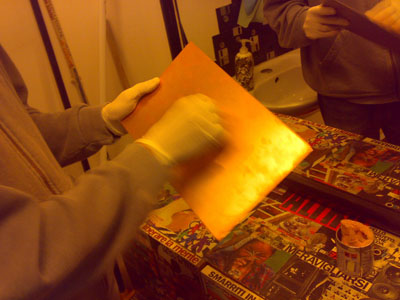
3. Stirare il foglio sulla basetta. Tenendo a contatto il toner con il rame. Per esperienza è stato necessario una ventina di minuti a metà potenza del ferro da stiro. E' utile avere un pennarello speciale per ripassare le parti venute male.

alla fine dovremmo ottenere una cosa del genere:
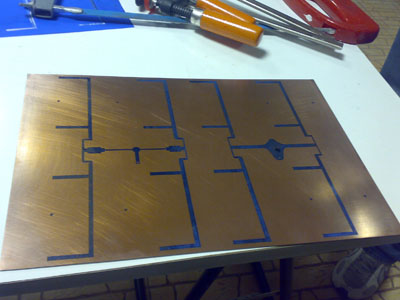
4. Immergere nell'acido per corrodere il rame non protetto (l'acido si trova in quasi ogni negozio di elettronica e costa pochissimo!). Consiglio: mettere a faccia in giù il circuito (non come vedete nella foto!! ![]() ) cosi' il rame corroso cadrà sul fondo della vaschetta.
) cosi' il rame corroso cadrà sul fondo della vaschetta.
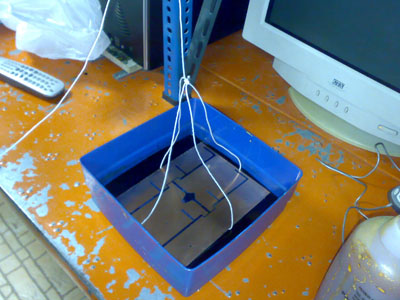
5. Creare il connettore. Prendere il cavo e metterci il connettore
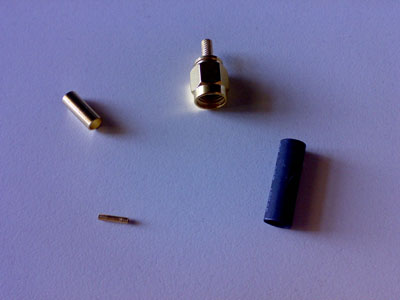
Saldare (o crimpare) la parte piccola con il probe (il filo interno). Questa è probabilmente parte più delicata. Inserirlo dentro l'involucro esterno fino a che il metallo non si veda dal buco ![]() A questo punto inserire la parte metallica cilindrica sopra la garza e criparla. Ad ultimo usare la guaina termorestringente.
A questo punto inserire la parte metallica cilindrica sopra la garza e criparla. Ad ultimo usare la guaina termorestringente.
(descrizione da migliorare!! ![]() )
)
6. Montaggio.
Segare la basetta per ricavare le due facce 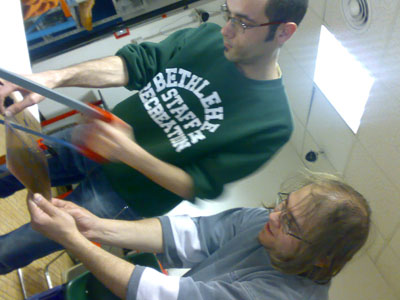
Forare con un trapano ed una punta abbastanza fina (2 - 3 mm).
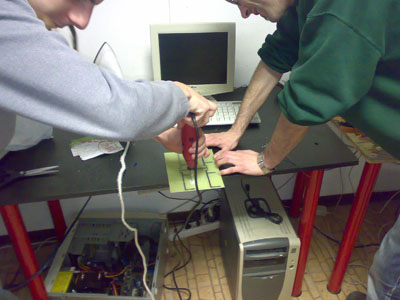
7. Montare le due faccie "tipo panino" , in modo che le piste di rame siano esterne. La distanza da tenere è di circa due centimetri. Io ho usato dei distanziatori da 2 cm.  Saldare all'antenna il cavo che abbiamo precedentemente attaccato al connettore. Il cavo dovrà essere spellato e fatto passare tra le due faccie.: la parte interna (probe) dovrà essere saldata sul punto rosso corrispondente con la piazzola di rame rettangolare più piccola , mentre la parte esterna dovrà essere saldata sul punto rosso corrispondente alla piazzola di rame più grossa. Per motivi estetici si puo' levare la protezione nera sui circuiti con della trielina.
Saldare all'antenna il cavo che abbiamo precedentemente attaccato al connettore. Il cavo dovrà essere spellato e fatto passare tra le due faccie.: la parte interna (probe) dovrà essere saldata sul punto rosso corrispondente con la piazzola di rame rettangolare più piccola , mentre la parte esterna dovrà essere saldata sul punto rosso corrispondente alla piazzola di rame più grossa. Per motivi estetici si puo' levare la protezione nera sui circuiti con della trielina.
8. L'antenna è pronta! Teoricamente il guadagno dovrebbe essere di 15 dbi ovvero dovremmo avere un guadagno di circa 13 db maggiore rispetto all'antenna standard in dotazione con la fonera.

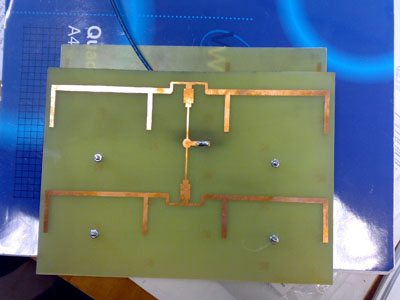
[1] http://www.wifi-ita.com/index.php?option=com_content&task=view&id=84&Itemid=45





